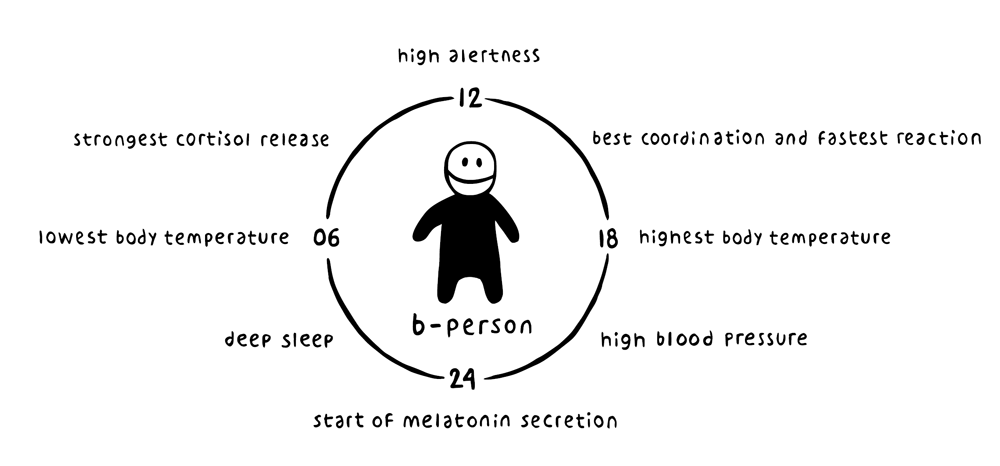
B-person
- Goes to bed later and gets up later
- Prefers quiet mornings
- Peaks mentally and physically later in the day
- Feels like there’s still plenty of day left after 4pm
- Solves most complicated, demanding or large tasks in the afternoon and evening
- Loves temporal freedom and flexibility
- Sleep in on weekends to catch up on sleep deprivation on work days
You are born with a biological clock. It’s not something you choose.
The distribution of circadian rhythms, or chronotypes, spans from extreme A-person, early chronotype, to extreme B-person, late chronotype, similarly to how height varies from short to tall.
If you are a B-person (late chronotype) your natural rhythm is to go to bed later and get up later. Unfortunately for the late chronotypes, most childcare institutions, schools and workplaces primarily support the early-rising morning persons. Therefore, you may often get too few hours of sleep on workdays.

Let’s look at how SCN (the master clock in our brain) regulates the rhythm of all the basic processes in your body. The drawing illustrates a 24-hour rhythm in a moderate late chronotype (B-person). In contrast to the illustration of the circadian rhythm in an A-person, the sleep hormone in the moderate late chronotype is not secreted until around midnight, which is why the late chronotype only falls asleep after this time. It also appears from the drawing that the moderate late chronotype has the deepest sleep around 3 o’clock, whereas the moderate early chronotype’s deep sleep occurred earlier, around midnight. The drawing here also shows that the strongest cortisol release takes place around 9 o’clock in the morning. which means that the late chronotype only feels awake later in the morning.
You can test your chronotype at https://chronotype-self-test.info/ or https://www.bodyclock.health/
